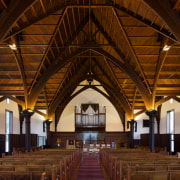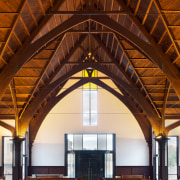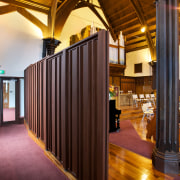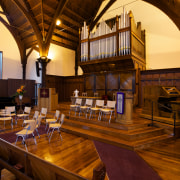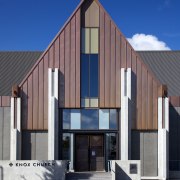Knox Church rebuilt after Christchurch earthquake with new exterior, copper cladding
Knox Church restoration following Christchurch earthquake new exterior protects Gothic Revival interior with design by Wilkie + Bruce Architects
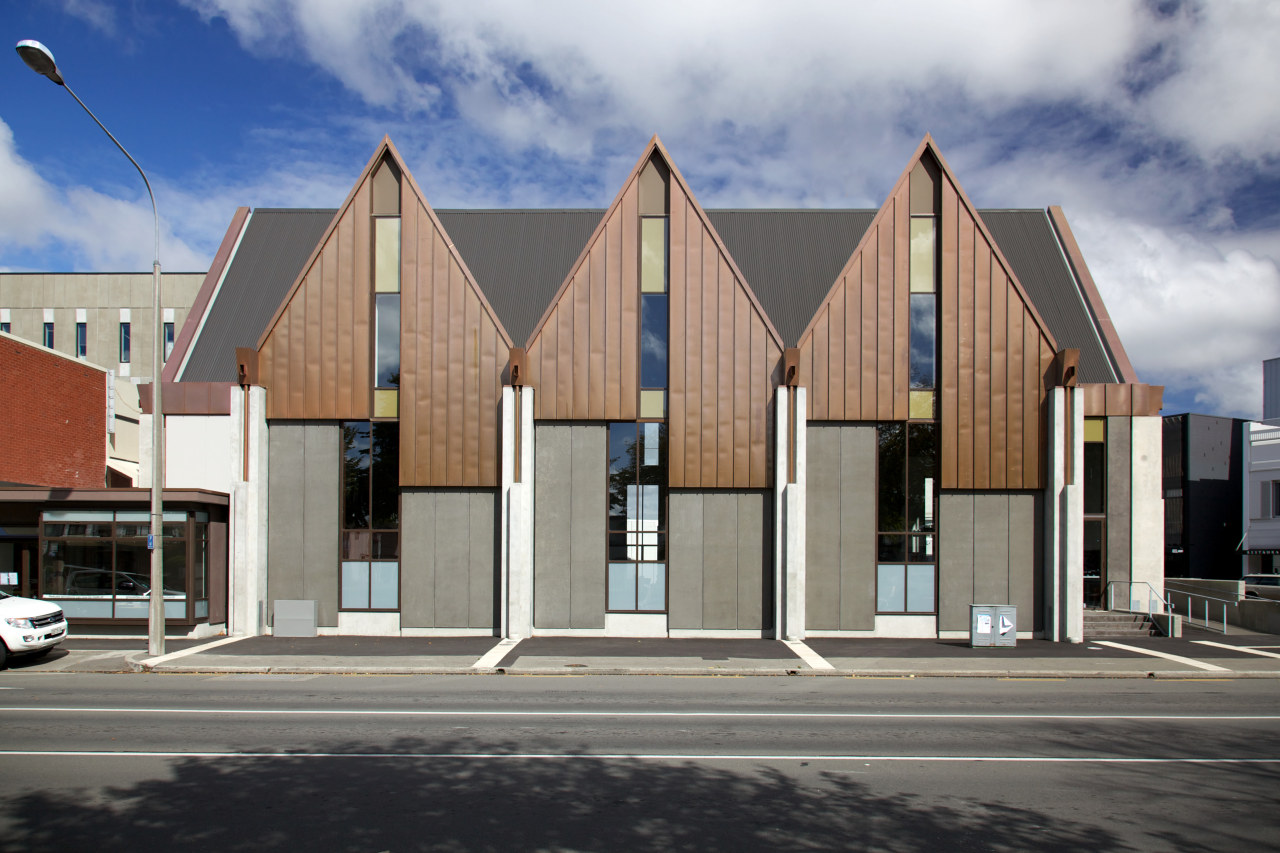
While the Christchurch earthquakes and aftershocks laid waste to so much of the region, they also opened up glimpses of the city that many residents had never before encountered.
The inside of Knox Church, built in 1902, is one example. The magnificent Gothic Revival timber interior of the church was exposed when the exterior brick walls came down. In fact, the interior was virtually the only part of the church left standing.
Architect Alun Wilkie says it was possible to stand inside the building after the earthquake and look up to see everything intact, with the beautiful vaulted ceiling with its heart rimu sarking still supported on matai timber posts. The brick exterior, on the other hand, was little more than a pile of rubble, and the walls still standing were highly unstable.
"For many people, this was the first time they had seen the magnificence of the interior, which was lit up during the rebuilding. Previously the windows were too high for people to see inside."
The architect says the rebuilding project, carried out by Higgs Construction, was unique in that it involved building a brand new exoskeleton around, under and over the remnant timber structure.
"We were acutely aware that this is a prominent site, on the main road leading into Christchurch," he says. "Prior to the rebuild, the exterior presented a pleasant, but unremarkable heritage building. Choosing how we would replace this part of the building was a significant challenge, but very early on it was decided that the materials had to be dignified. And the cladding of the high gables needed to be a lightweight, durable material."
These considerations led to the choice of copper that is low maintenance and will last for the next several hundred years.
"The copper drapes the church like a cloak. It is also reminiscent of hanging banners. We used this material to bring a distinctive asymmetry to the exterior, which is in contrast to the conventional triptych approach to church gables. We wanted to break with the orthodoxy of a traditional Neo Gothic facade. This building was never meant to be a replica of what went before. It needed to read as an entirely new, contemporary building, albeit with a heritage structure inside."

Wilkie says the new windows are now much lower than the originals, so people passing in the street can enjoy glimpses of the heritage interior. This, in turn, helps to raise the profile of the church.
The base of the building features asymmetrical acid-washed precast concrete panels in charcoal. The panels have a slightly textural surface that absorbs the light a little more than bare concrete. The new concrete buttresses mimic the design of the original red brick versions, with copper downpipes and rainwater heads detailed to resemble filigree elements.
However, the key point of difference lies in the earthquake proofing. Structural engineer Aurecon was keen to adopt a resilient new structure. Each concrete buttress has an inner core of post-tensioned, high-tensile steel that turns the concrete into a rocking frame so that the building sustains minimal damage in an earthquake.
"The entire building is also tied together with a steel ring beam," says Wilkie. "Where the beam crosses behind the windows, the glazing is a mustard colour that helps to conceal the steel."
There are also four pairs of dissipator bolts at the base of each concrete column, to reduce rocking movements. These are covered by a steel panel that can be removed to access the bolts, which can be adjusted following a severe earthquake.
To further strengthen the building, the original floor was removed, and all the rimu floor boards removed. A new raft foundation was laid, and the rimu boards returned to their original positions.
Paul Harris, Higgs Construction director, says the main challenge was combining modern construction techniques and tolerances with the techniques used more than 100 years ago.
"The new structure was constructed to support and protect the existing timber structure, particularly in the event of a severe earthquake," he says. "Merging these two different structures was a challenge, but the construction team found solutions. We recognise it is not always possible to save pieces of our heritage, so this was a tremendous outcome."
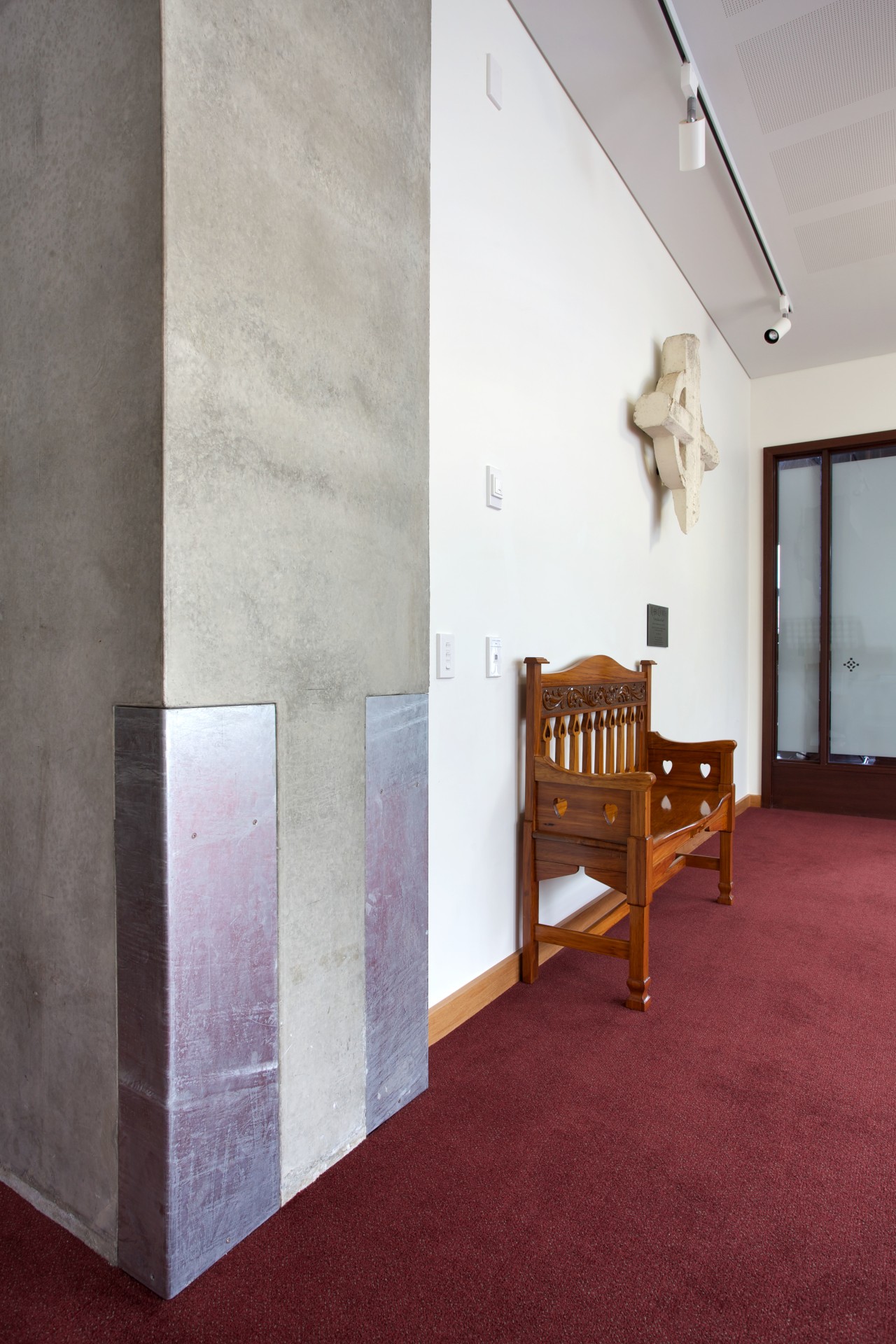
The design team also took the opportunity to create a new western entry, adding new bronze front doors and a glazed draught lobby.
"The doors are the only semi-traditional new element to be added," says Wilkie. "They add a sense of gravitas and permanence to the portal. We provided glazing on either side of the doors to enhance the connection between inside and out."
A large limestone cross that was originally on the outside of the church is now mounted in the vestibule. The organ was also fully restored and now has an electronic console. Supported by a new steel frame, it forms a dramatic centrepiece above rimu wainscoting at the back of the altar. Angled textural rimu side screens were introduced either side of the altar to improve the acoustics.
The church has new plywood roof bracing, a new Colorsteel roof, and has been equipped with sprinklers to meet current building codes.
"The church is like a new building, and it should be good for the next 500 years," says Wilkie. "It is already being used for a much wider range of events, including music performances.
"The success of the project can be measured in the way the church has captivated the city of Christchurch. People have taken ownership of the project and are promoting it as an example of what good church restoration can do for the city."
Credit list
Location
Structural engineer
Acoustic consultants
Organ restoration
Roofing
Door and window joinery
Exterior handrails
Acoustic screens
Architect
Quantity surveyor
Main contractor
Cladding
Precast walls and buttresses
Hardware
Blinds
Carpet
Story by: Colleen Hawkes
Photography by: Jamie Cobel
Home kitchen bathroom commercial design
Commercial Design Trends Vol. 31/7
Commercial Design Trends is aimed at our professional readers, and showcases commercial buildings. The book features reg...
Read More

